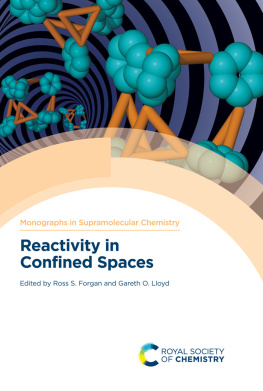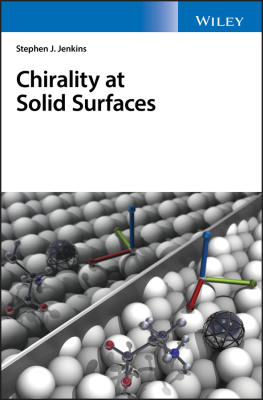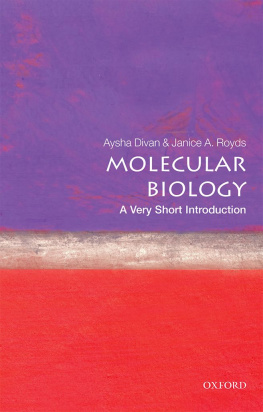Cover

| title | : | Chiral Photochemistry Molecular and Supramolecular Photochemistry ; 11 |
| author | : | Inoue, Yoshihisa; Ramamurthy, V. |
| publisher | : | CRC Press |
| isbn10 | asin | : | 0824757106 |
| print isbn13 | : | 9780824757106 |
| ebook isbn13 | : | 9780203026342 |
| language | : | English |
| subject | Chirality, Asymmetry (Chemistry) , Chiral drugs, Photochemistry--Industrial applications. |
| publication date | : | 2004 |
| lcc | : | QD481.C53 2004eb |
| ddc | : | 541.2'23 |
| subject | : | Chirality, Asymmetry (Chemistry) , Chiral drugs, Photochemistry--Industrial applications. |
Page a
Chiral Photochemistry
MOLECULAR AND SUPRAMOLECULAR PHOTOCHEMISTRY
Series Editors
V.RAMAMURTHY
Professor
Department of Chemistry
Tulane University
New Orleans, Louisiana
KIRK S.SCHANZE
Professor
Department of Chemistry
University of Florida
Gainesville, Florida
1. Organic Photochemistry, edited by V.Ramamurthy and Kirk S.Schanze
2. Organic and Inorganic Photochemistry, edited by V.Ramamurthy and Kirk S.Schanze
3. Organic Molecular Photochemistry, edited by V.Ramamurthy and Kirk S.Schanze
4. Multimetallic and Macromolecular Inorganic Photochemistry, edited by V.Ramamurthy and Kirk S.Schanze
5. Solid State and Surface Photochemistry, edited by V.Ramamurthy and Kirk S.Schanze
6. Organic, Physical, and Materials Photochemistry, edited by V.Ramamurthy and Kirk S.Schanze
7. Optical Sensors and Switches, edited by V.Ramamurthy and Kirk S.Schanze
8. Understanding and Manipulating Excited-State Processes, edited by V.Ramamurthy and Kirk S.Schanze
9. Photochemistry of Organic Molecules in Isotropic and Anisotropic Media, edited by V.Ramamurthy and Kirk S.Schanze
10. Semiconductor Photochemistry and Photophysics, edited by V.Ramamurthy and Kirk S.Schanze
11. Chiral Photochemistry, edited by Yoshihisa Inoue and V.Ramamurthy
12. Synthetic Organic Photochemistry, edited by Axel G.Griesbeck and Jochen Mattay
ADDITIONAL VOLUMES IN PREPARATION
Page i
Chiral Photochemistry
edited by
Yoshihisa Inoue
Osaka University
Suita, and
Japan Science and Technology Agency
Kawaguchi, Japan
V.Ramamurthy
Tulane University
New Orleans, Louisiana, U.S.A.

MARCEL DEKKER
NEW YORK
Page ii
This edition published in the Taylor & Francis e-Library, 2005.
To purchase your own copy of this or any of Taylor & Francis or Routledges collection of thousands of eBooks please go to www.eBookstore.tandf.co.uk.
Although great care has been taken to provide accurate and current information, neither the author(s) nor the publisher, nor anyone else associated with this publication, shall be liable for any loss, damage, or liability directly or indirectly caused or alleged to be caused by this book. The material contained herein is not intended to provide specific advice or recommendations for any specific situation.
Trademark notice: Product or corporate names may be trademarks or registered trademarks and are used only for identification and explanation without intent to infringe.
Library of Congress Cataloging-in-Publication Data
A catalog record for this book is available from the Library of Congress.
ISBN 0-203-02634-9 Master e-book ISBN
ISBN:0-8247-5710-6 (Print Edition)
Headquarters
Marcel Dekker, 270 Madison Avenue, New York, NY 10016, U.S.A.
tel: 2126969000; fax: 2126854540
Distribution and Customer Service
Marcel Dekker, Cimarron Road, Monticello, New York 12701, U.S.A.
tel: 8002281160; fax: 8457961772
The publisher offers discounts on this book when ordered in bulk quantities. For more information, write to Special Sales/Professional Marketing at the headquarters address above.
Copyright2004byMarcel Dekker.
All Rights Reserved.
Neither this book nor any part may be reproduced or transmitted in any form or by any means, electronic or mechanical, including photocopying, microfilming, and recording, or by any information storage and retrieval system, without permission in writing from the publisher.
Page iii
Preface
Control of molecular chirality is central to contemporary chemistry- and biology-related areas, such as pharmaceutical, medicinal, agricultural, environmental, and materials science and technology. Thus, a wide variety of sophisticated chiral reagents, auxiliary, catalysts, hosts, and methodologies have been developed particularly in recent years as tools for controlling chiral reactions, equilibria, and recognition in both chemistry and biology.
Traditionally, chirality control has been achieved predominantly through the ground-state interactions of substrate/guest with chiral reagent/auxiliary/catalyst/host/receptor/enzyme, which are structurally and energetically well defined and characterized in considerable detail. In sharp contrast, the possibility of chirality control in the electronically excited state has not been extensively explored experimentally or theoretically, until recently. This is simply because of the long held belief that in the excited states chiral interactions, particularly the intermolecular ones, are too weak and short-lived in general to achieve high stereochemical recognition and differentiation. However, this has turned out not to be true, and several recent works have clearly demonstrated that chirality control in the excited state is not a difficult but rather a fascinating subject to study, displaying various novel phenomena which are unexpected and unprecedented in the conventional thermal chiral chemistry occurring in the ground electronic state.
The origin of chiral photochemistry, or photochirogenesis, dates back to the late 19th Century, when le Bel (1875) and vant Hoff (1894) suggested the use of circularly polarized light for so-called absolute asymmetric synthesis (AAS). The first successful AAS was achieved by Kuhn in 1929, immediately after the discovery of circular dichroism by Cotton. Modern chiral organic photochemistry may be traced back to the work of Hammond and Cole reported in 1965; they demonstrated for the first time that chiral information could be transferred from an optically active sensitizer to a substrate upon photosensitization. In the 1970s, considerable effort was devoted to the AAS of helicene precursors by Kagans and Calvins groups, while more recently, and particularly in the
Next page









